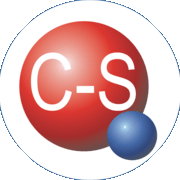Description
The azide function is widely used for coupling to alkyne-containing fragments via the renowned Click reaction. Besides that oligo-Gly has been used as linker to combine different subunits of dimeric or oligomeric proteins or to create artificial multi-domain proteins. By modification into Gly-Gly-Gly-Ser motifs high solubility can be achieved. Most of the linkers are rigid and function to prohibit unwanted interactions between the discrete domains. However, Gly-rich linkers are flexible, connecting various domains in a single protein without interfering with the function of each domain. The flexibility of oligo-Gly is much higher than for any other amino acid combination due to a high number of Phi/Psi-angle combination areas in the Ramachandran plot. This enables formation of unusual structure elements like turns, breaks of helices and sheets etc. Another application of oligo-Gly is its use in Sortase linking technology, where oligo-Gly binds as free N-Terminus to the recognition motif (LPXTG) of the C-terminus of a protein of interest. The transpeptidase activity of sortase is used by structural biologists to produce fusion proteins in vitro. In the presence of sortase the two peptides are covalently linked through a native peptide bond. Oligo-Gly designed in a star-like fashion, so-called tri- and tetraantennary molecules, were found to form highly ordered supramers in aqueous medium. Polyglycine fragments containing up to 7 glycines are reported to bind to surfaces and have potential application in nanotechnology constructs: constructs of Gly7-NHCH2-fragment containing peptides bind on mica surface in aqueous solution. References: DNA-bending finger: artificial design of 6-zinc finger peptides with polyglycine linker and induction of DNA bending; Imanishi M., Hori Y., Nagaoka M., Sugiura Y.; Biochemistry 2000; 39(15): 4383-90. Biantennary oligoglycines and glyco-oligoglycines self-associating in aqueous medium; Svetlana V. Tsygankova, Alexander A. Chinarev, Alexander B. Tuzikov, Nikolai Severin, Alexey A. Kalachev, Juergen P. Rabe, Alexandra S. Gambaryan and Nicolai V. Bovin; Beilstein J. Org. Chem. 2014; 10: 1372-1382. doi:10.3762/bjoc.10.140. Assembly of Oligoglycine Layers on Mica Surface; Svetlana V. Tsygankova, Alexander A. Chinarev, Alexander B. Tuzikov, Ilya S. Zaitsev, Nikolai Severin, Alexey A. Kalachev, Jurgen P. Rabe, Nicolai V. Bovin; Journal of Biomaterials and Nanobiotechnology 2011; 2: 91-97. doi:10.4236/jbnb.2011.21012. Linkers in the structural biology of protein-protein interactions; Vishnu Priyanka Reddy Chichili, Veerendra Kumar, and J. Sivaraman; Protein Science 2013; 22: 153-167. DOI: 10.1002/pro.2206. Effects of the length of a glycine linker connecting the N- and C-termini of a circularly permuted dihydrofolate reductase; Masahiro Iwakura and Tsutomu Nakamura; Protein Engineering 1998; 11(8): 707-713. Optimizing the stability of single-chain proteins by linker length and composition mutagenesis; Robinson, R. Clifford; Sauer, Robert T.; PNAS 1998; 95(11): 5929-5934. Streptavidin-hydrogel prepared by sortase A-assisted click chemistry for enzyme immobilization on an electrode. Takuya Matsumoto, Yuki Isogawa, Tsutomu Tanaka, Akihiko Kondo; Biosensors and Bioelectronics 2018; 99: 56-61. DOI: org/10.1016/j.bios.2017.07.044




 Chemical-Suppliers.eu
Chemical-Suppliers.eu